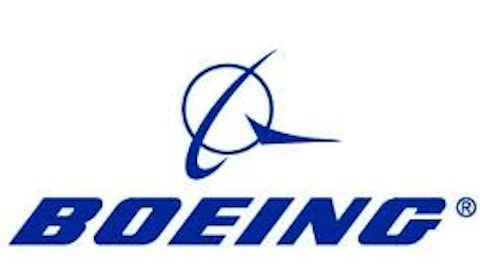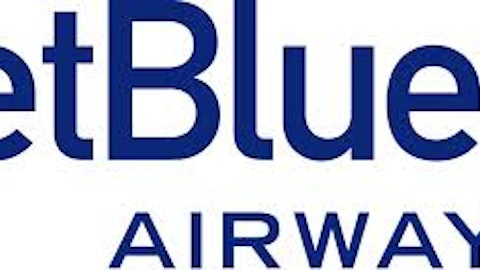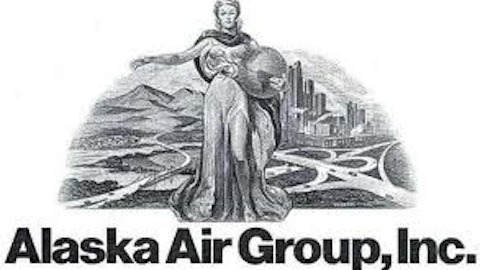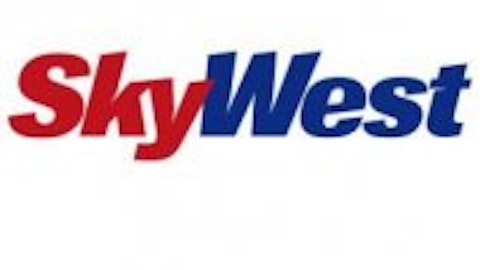A popular Harvard Business School case study written nearly a decade ago highlighted the low-cost carrier (LCC) threat that was becoming a reality to Delta Air Lines, Inc. (NYSE:DAL). Then CEO Leo Mullin predicted that the most dangerous competition facing Delta was not big-named carriers like United Continental Holdings Inc (NYSE:UAL), but instead the growing trends in LCC competitors like Southwest Airlines Co. (NYSE:LUV) and JetBlue Airways Corporation (NASDAQ:JBLU). After failed attempts to compete with the LCCs in the past with Delta Express and Song, Delta looks like it’s now preparing to fly into LCC territory again – just more stealthy.
Delta means change
As the world’s largest airline by fleet size and scheduled passenger traffic, Delta Air Lines, Inc. (NYSE:DAL) today is the result of over 80 years of airline mergers, with the most recent deal being with Northwest Airlines in 2008. Despite the stock price being up over 69% the past year, quarterly profit margins have been a problem for Delta for several years. The airline is carrying a (-1.7%) average quarterly profit margin over the past five years, and hit 0.1% in its most recent quarter.
To add to its problems was the 94% drop in net income for the first quarter of 2013, falling from $124 million a year ago to just $7 million. The airline business is very vulnerable to fuel expenses and overhead costs.
Delta Air Lines, Inc. (NYSE:DAL) is currently in the process of transforming its fleet into one that is far more efficient. In 2011, Delta made an agreement with The Boeing Company (NYSE:BA) to purchase 100 new fuel efficient B-737s with orders that go out to 2018. Last year, Delta made additional purchases from Bombardier Aerospace to acquire 40 CRJ-900s. What is more of a hint of changes to come is the additional leasing of 88 old B-717s – a plane that Boeing actually stopped building over seven years ago.
The change in Delta Air Lines, Inc. (NYSE:DAL)’s fleet has the look and feel of possibly becoming the world’s largest LCC airline. If Delta can transform its fleet into being more fuel efficient while extending the life of older plane models to their limits to save money and improve margins, it might be able to eventually provide airfares that are more competitive to the LCC players. This could make the airline’s failed LCC experiments of the past a distant memory. The purchase of new planes – or lack thereof – earlier in June while in Paris clearly shows Delta is taking a different path from the traditional big airline carriers.
Latest and greatest vs. penny pincher
Unlike Delta Air Lines, Inc. (NYSE:DAL), United bought 35 new Airbus A350s and 20 787s from The Boeing Company (NYSE:BA) while in Paris a couple of weeks ago. While Delta is content with flying many jets that are approaching 40 years old, it appears that United is sticking to its business model of providing the latest in luxury for its customers.
Other upgrades to United Continental Holdings Inc (NYSE:UAL)’s fleet include a new lounge standard that premiered at Chicago O’Hare International Airport and is planned to spread throughout the company’s hubs. United has also expanded the meaning of first class with new transcontinental premium aircraft designs that have flat-bed seats, all-new interiors, and on-demand entertainment. Furthermore, United has invested heavily in staying current by being compatible with the latest software systems like the Windows Phone 8 user support on its planes. Overall, the company’s 7,000 new flat-bed seats across 182 aircraft ranks first among U.S. carriers.
These upgrades don’t appear to help quarterly profit margins for United, though. Average quarterly profit margins are -5.5% the past five years and net income improved, but was a loss of $417 million for the first quarter of 2013. United’s decisions the past few years with its Continental merger, its persistence at building a fleet of luxurious and expensive planes, and creating a first-class environment for as many customers as possible has backfired financially and logistically. The merger still plagues operations as it still has one of the lowest on-time arrival rates in the industry while having some of the highest airfare rates overall.
A better JetBlue?
JetBlue Airways Corporation (NASDAQ:JBLU) is the household name for the LCC alternative when it comes to shopping flights. However, Spirit Airlines Incorporated (NASDAQ:SAVE) looks to be an improved version and vision of what being an LCC is all about. This despite originally being a trucking company up until 1980 and not being an LCC until 2007.
Since the IPO in June of 2011, the stock is up over 172% and now has a market cap of $2.2 billion compared to JetBlue’s $1.8 billion. The relatively tiny fleet of 49 aircraft has pushed Spirit to become a legit competitor to the much larger airline carriers. Its average quarterly profit margins have been 8.5% for the past five years and revenue has jumped from $781 million (2010) to $1.3 billion (2012). Analysts currently expect revenue to hit $1.9 billion by 2014.
While many airlines are trying to provide greater luxury to fliers, Spirit Airlines Incorporated (NASDAQ:SAVE) does the opposite and the reviews show this. Known for charging for every ‘extra’ including $5 for printing boarding passes at the terminal, it is near last in customer service, but customers keep packing the cheap flights. Overall, it goes to show that most fliers only want to reach their destination for the cheapest price possible – everything else is extra.
DAL Total Return Price data by YCharts
Stealth mode
It has been nearly two decades since Delta Air Lines, Inc. (NYSE:DAL) first started to seriously come up with a way to compete with the LCCs. Like many other high-cost carriers trying to enter into the LCC environment, the biggest hurdle has always been how to avoid becoming a high-cost carrier selling cheap seats. Today’s situation looks to be a classic ‘if you can’t beat them, join them’ routine except this time it might be different.
Delta Express and Song suffered financially mostly due to inefficiencies in acting as subsidiaries under an umbrella of decades of cemented company culture. If Delta can transform itself away from its fundamental business of buying the latest and greatest like its counterpart United Continental Holdings Inc (NYSE:UAL) still does, it has the potential to be something not seen yet in airspace.
If Delta becomes an LCC, the stock could literally take off because history shows that customers will usually look for the lowest airfare. Being already the largest airline by fleet size, this would put Delta in a prime position to steal customers away from the other LCCs. If Delta doesn’t become an LCC, Delta will remain as it has always been – one of the the top-two major airline carriers in this country – and susceptible to negative or zero profit margins. LCCs like Spirit and JetBlue will continue to slowly maneuver their business and take small chunks of customers from the high-cost carriers.
Michael Carter has no position in any stocks mentioned. The Motley Fool owns shares of Spirit Airlines Incorporated (NASDAQ:SAVE). Michael is a member of The Motley Fool Blog Network — entries represent the personal opinion of the blogger and are not formally edited.
The article Is Delta Flying Stealth Into Low-Cost Carrier Territory? originally appeared on Fool.com and is written by Michael Carter.
Copyright © 1995 – 2013 The Motley Fool, LLC. All rights reserved. The Motley Fool has a disclosure policy.






